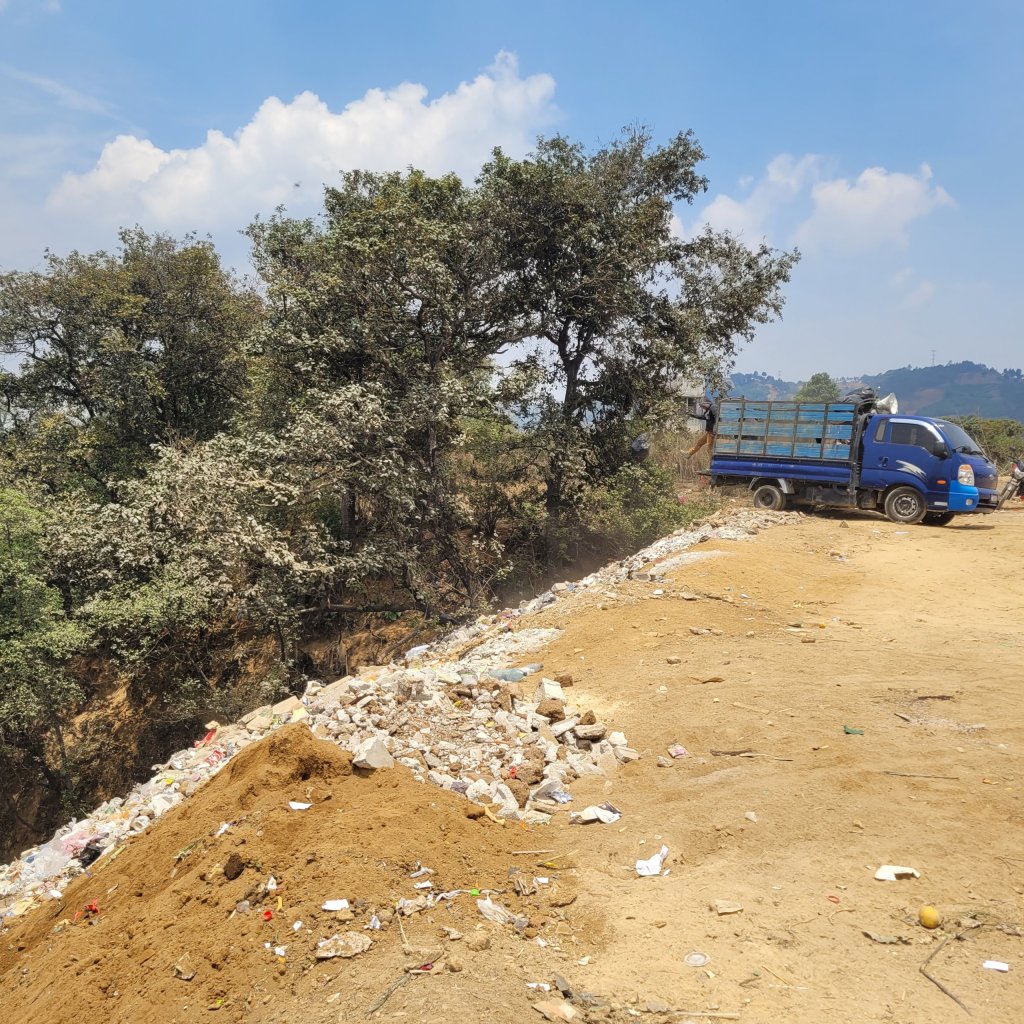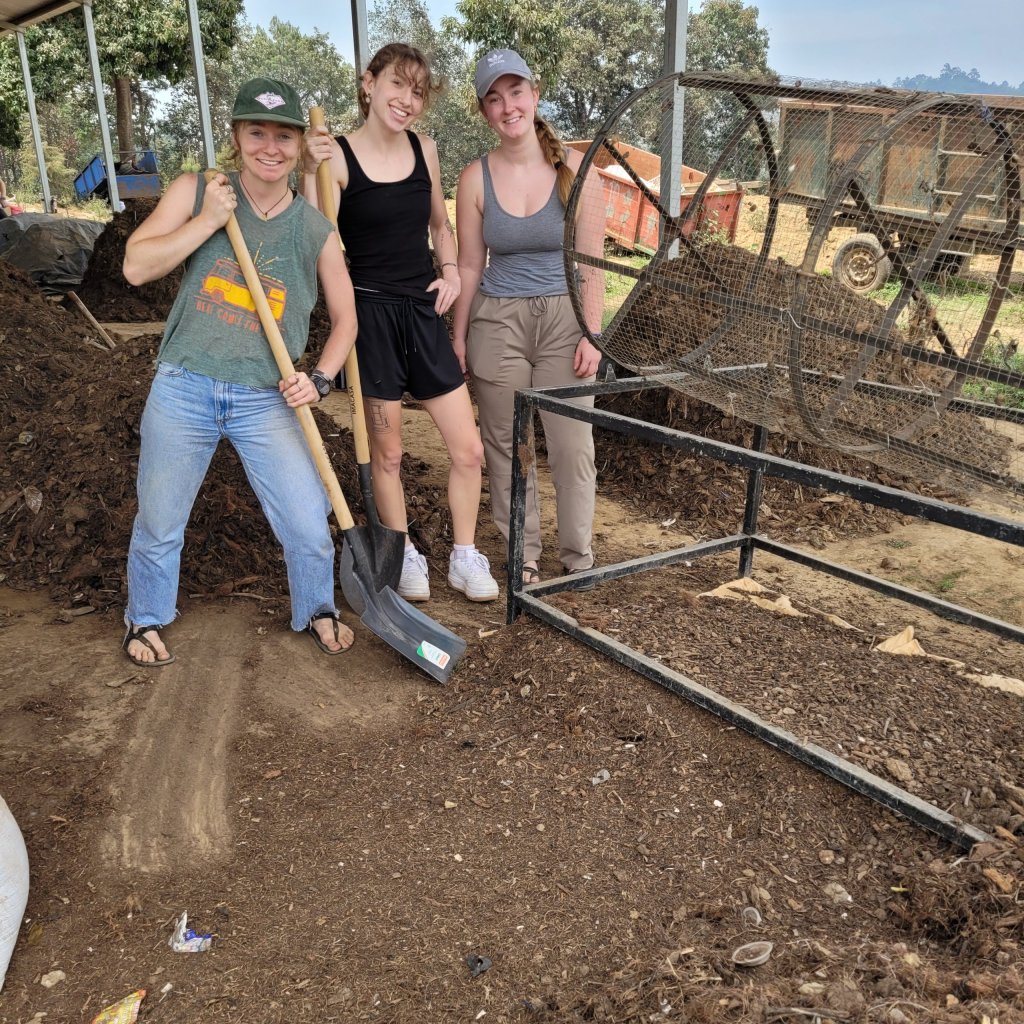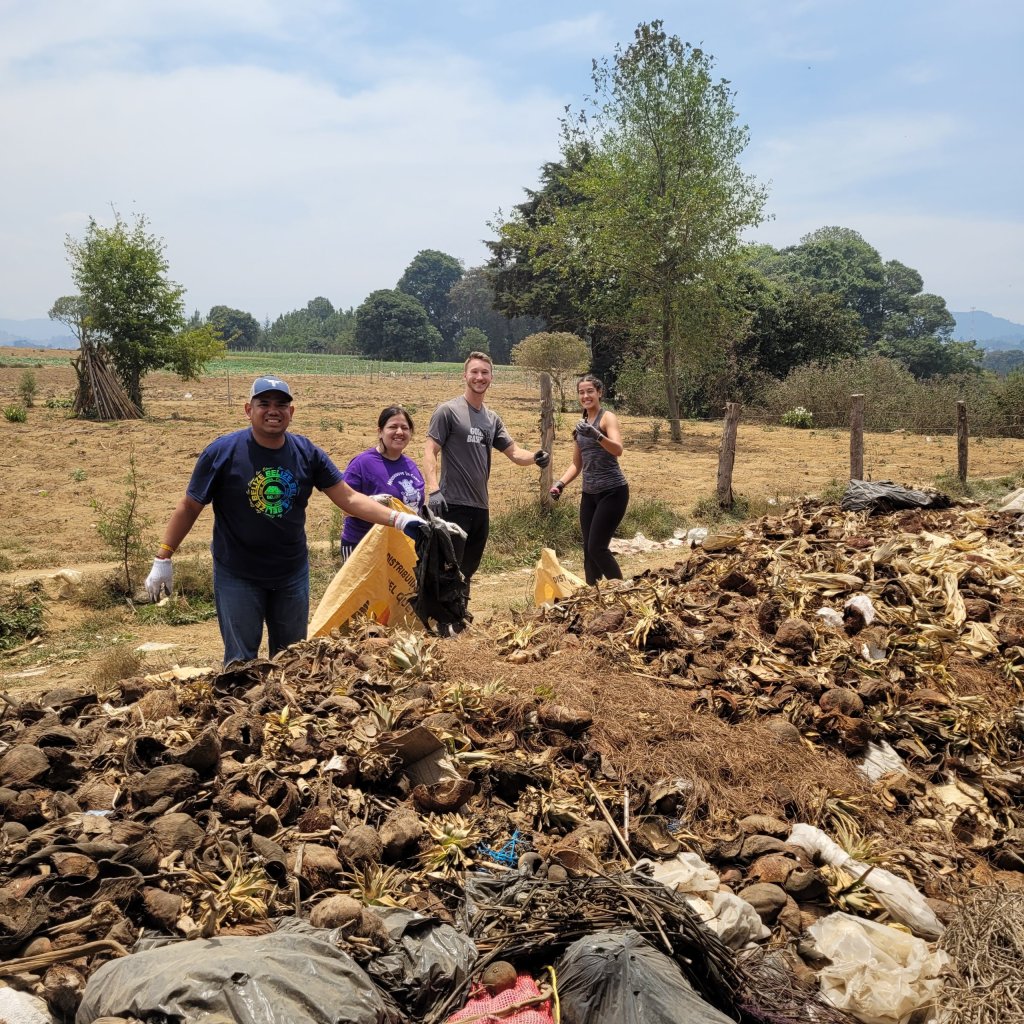Worms, Composting, and Renewal: A Day at the Rujotay Project in Guatemala

By Elizabeth Miller ’06, Asst. Prof. of History / Director of the Institute for the Study of Global Anabaptism
Benita directed the bus to park next to Comalapa’s town dump, as she began to tell the members of the Goshen College Guatemala May Study-Service Term (SST) course about the path that led her to return to her hometown. The SST group’s visit was part of a new donor-funded carbon-onsetting initiative that integrates environmental education, local investment, and climate change mitigation into GC’s global education program. Benita had been born and raised in Comalapa, a majority Maya Kaqchikel town located in an agricultural region about two hours from the capital, but she later moved away for a college education and professional work elsewhere. On visits home, however, she found herself increasingly troubled by the practice of burning trash on the banks of a river ravine on the outskirts of town. “I thought of Nehemiah and how God’s children are charged with liberating all of creation,” she said. Nehemiah, of course, was the Jewish prophet tasked with rebuilding the walls of Jerusalem after the Babylonian exile. Seventy years before, the people wept as they watched Jerusalem burn, but in the time of Nehemiah, they were invited to join in the work of rebuilding their homeland.

Inspired by this vision, Benita moved back to Comalapa and began to gather around her other young people committed to ecological alternatives for their town. A young woman named Evelyn–recently graduated from ninth grade–was on board from the very beginning. First, they learned to separate organic material from inorganic material. Then they started a small vermiculture bin. Benita claimed that the handful of worms they acquired for the vermiculture bin quickly made themselves “lovable,” by virtue of their ability to efficiently turn fruit and vegetable scraps into rich organic fertilizer. The vermiculture project grew slowly, as new families joined and contributed compostable waste from their households. Evelyn, for her part, at first avoided the worms, but she was eventually converted and today is one of the main coordinators of the vermiculture program.

Yet the young people, now organized under the name of Rujotay, longed for a larger scale impact, leading them to secure a small plot of land adjacent to the town dump. Here they collected organic waste from the town market, full of husks, hulls, and stems that were too tough for the worms to appreciate. By separating out all the plastic, seeding the piles with fungi spores, and cultivating a thermophilic aerobic process to jumpstart composting, the group learned to produce a high-quality compost that can be used to benefit local agriculture and landscaping. With more time they were able to convince the municipality to collect and deliver the market waste directly to their composting site. Last year Rujotay successfully diverted 12 tons of waste from the town dump and transformed it into compost.
The word rujotay refers to a new shoot, emerging out of the main trunk after a period of dormancy or following a pruning process. Instead of rebuilding a physical city, as was the case for Nehemiah, Benita and others in Rujotay seek to nurture the earth’s own capacity for healing and new life, even after immense strain. Although never forcibly exiled, Comalapa has experienced tremendous violence throughout its history. A famous mural painted on the exterior wall of the town cemetery narrates the pain of the Spanish invasion, devastating natural disasters, and, most recently, the impact of the Guatemalan civil war on the Kaqchikel population of Comalapa. Benita accompanied the SST students from panel to panel, translating the macro scale of the violence into the deep loss and trauma experienced on an interpersonal and familial level. Even in a community as resilient as Comalapa, the wounds left by such violences can make it harder to envision new futures, to trust one’s neighbors, or to invest in institutions.
Benita is aware that Rujotay is small and that their efforts are merely a drop in the bucket compared to the full scale of the challenge of waste collection and management in Guatemala. But what Rujotay seeks is not simply to shrink the size of the town dump, although it is certainly contributing to that goal. Instead they are about rebuilding and tending to new possibilities of life for Comalapa’s residents. They teach school children about the full trash cycle and how to interrupt and transform it, in the interest of a safer and healthier community. Through patient diplomacy they draw local government and business and educational sectors into conversation and action on the environment. They support young leaders like Evelyn in seeking a university education, so that she and others can contribute to Comalapa as professionals deeply rooted in their home context. (Evelyn just finished her first semester of university studies, while continuing to direct the vermiculture plots at Rujotay.) Nehemiah’s themes of return and rebuilding take on new life in Comalapa, as Benita and others work to strengthen their community and its environmental health, one compost pile at a time.






